I previously installed a Renogy 40 amp DC-DC charger. It worked fine, but had limited settings and no Bluetooth. My new batteries want a low absorption charge set at 13.8 volts which the old Renogy can’t accommodate.
Also I would like to have a reverse DC-DC charger to keep my Mercedes battery charged while parked.
It seems a bit silly to install two DC-DC chargers, and a relay to prevent a loop.
Enter the Rego. This is the first bidirectional charger that goes both ways. It will charge your house batteries or your engine battery, depending.
I want to preserve the DC Charger Lighted Dash Switch that I previously installed, so I will need some kind of relay to disconnect the starter battery.
I could use the existing Cole Hersee 200 amp relay that I installed way back. It uses about 1/2 amp though, and I don’t fancy leaving it activated for months even though its rated for continuous duty.
So its a bit of overkill, but I bought this guy:
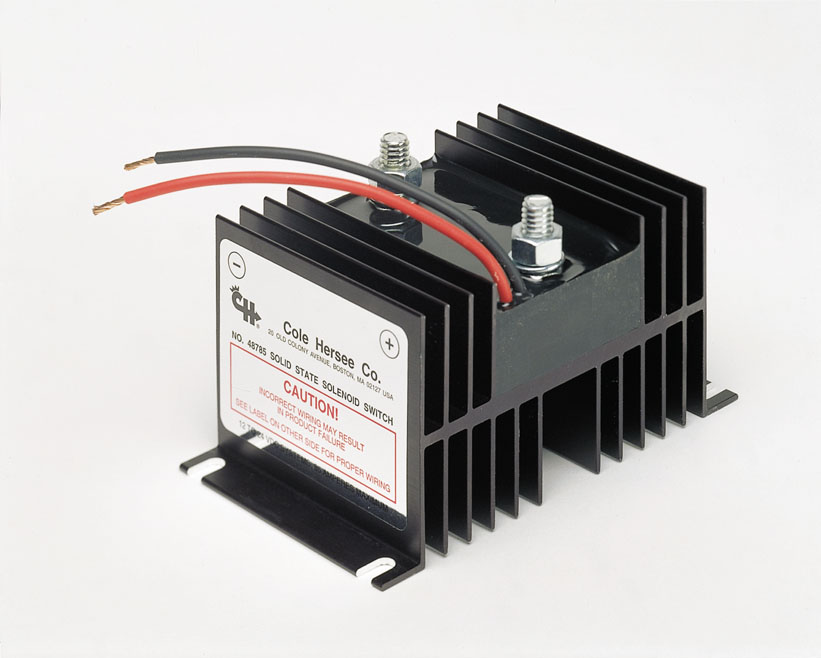
What we have here is a “Solid State Solenoid” (presumably MOSFET?). The advantage is – rated for millions of cycles, no arcing, and a current draw that’s almost too low to measure – I think .05 amps. Its very expensive, but you can find it for under $150 is you shop around.
You could find something much cheaper on Amazon I am sure. But when I select electrical products for the RV, I prefer absolutely top quality. Cole Hersee was always a great brand (recently acquired by Littelfuse, another well known brand) so I know I am getting a quality build.
The relay should be extremely simple to install. I am going to remove the existing battery isolation solenoid under the seat and basically drop this in instead. The only wiring change is that I don’t want the existing IRD. That device turns off with the engine, so I wouldn’t get a bidirectional charge. Instead I will power this “relay” from the house battery, so its always available as long as I don’t turn off the house batteries.
Neat!
The Rego itself is painfully large. They want you to mount is vertically. While I suspect that’s not 100% necessary, I have a pretty good spot chosen. What used to be the battery compartment under the steps is partially empty now that I installed 400 AH of Discovery Lithium. So I’ll mount it in the old battery compartment which is perfect because that’s where all these wires terminate anyway. This compartment is well ventilated and gets caked in road dust so the Rego is well suited as it appears to be sealed and fanless.
So I just mounted it on the removable door:
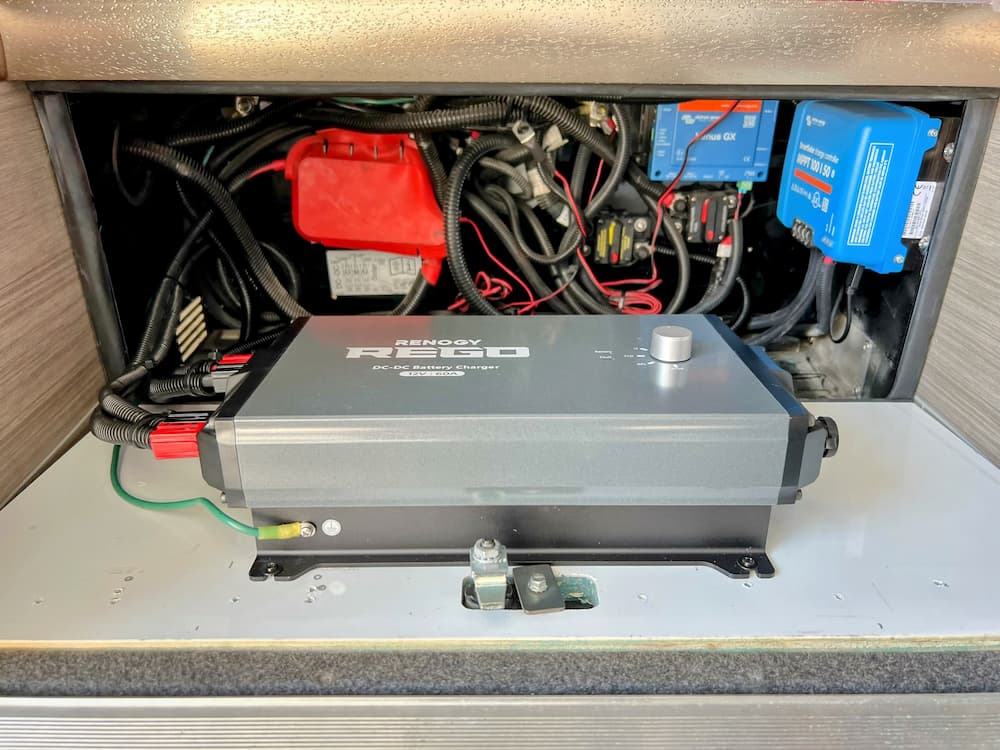
Whats also nice is that Renogy uses Anderson PP75 “Powerpoles” to connect, so it can be unsnapped to remove the door. Closing the door partially it looks like this:

Incidentally, I think it usually comes with with a 10 foot Anderson cable, but I bought it off Amazon on a “warehouse sale” which was missing the cables. But it turns out you can buy a set of Powerpole connectors (link below) which use a standard AWG 6 crimp, so it just takes seconds to make your own:
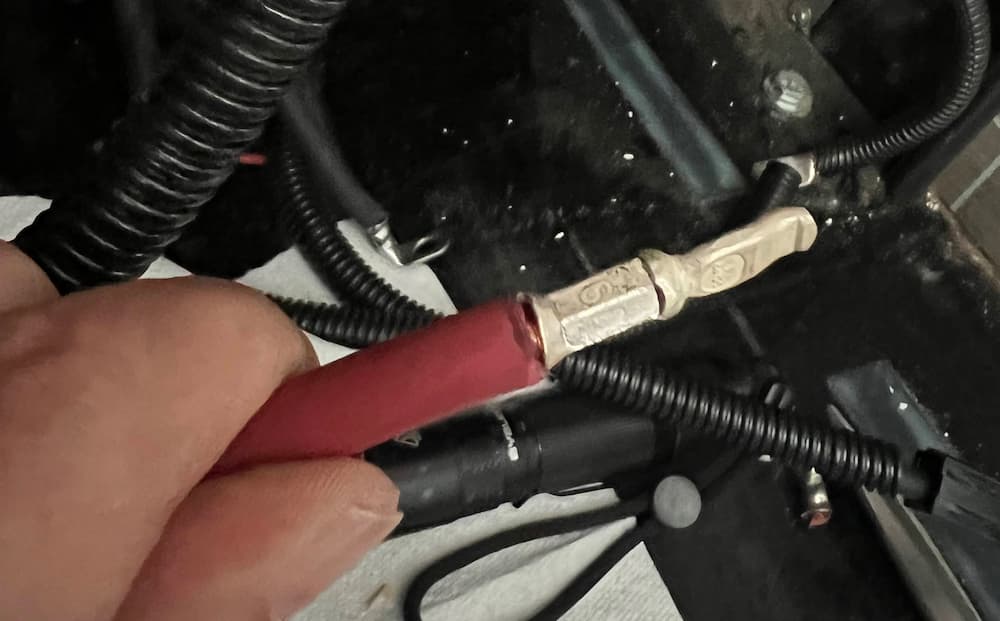
All you do is crimp the connector and push into the housing; I love these connectors and I’m sure I can find some other uses.
For fusing, I put a Bussman 80 amp fuse in the existing AMG/MEGA bar. This would be for the output (house) side. On the input side I use a Blue Sea 80 amp breaker. The Cole Hersee is rated for 85 amps continuous. I put a 3 amp inline fuse on the control wiring to the dash switch.
I connected the “house” side to the Rego and switched on the battery. Everything seemed to work fine. The Renogy “DC Home” app worked and I was able to access the user settings and setup the charge profile for my battery.
One thing I do not like about the app is – no security! That’s right, anybody with the app can fiddle with your charge settings. It need not be malicious – they might think they are connecting to their own battery. I plan to test the Bluetooth range and consider keeping this switched off if other RVs are within range. Thanks for being stupid, Renogy! I do hope they fix it on an update – and Renogy is known for reading their Amazon reviews, so one can hope.
I just received the Cole Hersee solid state relay. This really is totally unnecessary. You could use a $20 relay off Amazon. Or even the battery isolator I already had under the seat. I just choose to use this thing because its so cool and has no moving parts and draws no current.
Here is the Cole Hersee wired under the seat before I screwed it down. I removed the original IRD and solenoid:
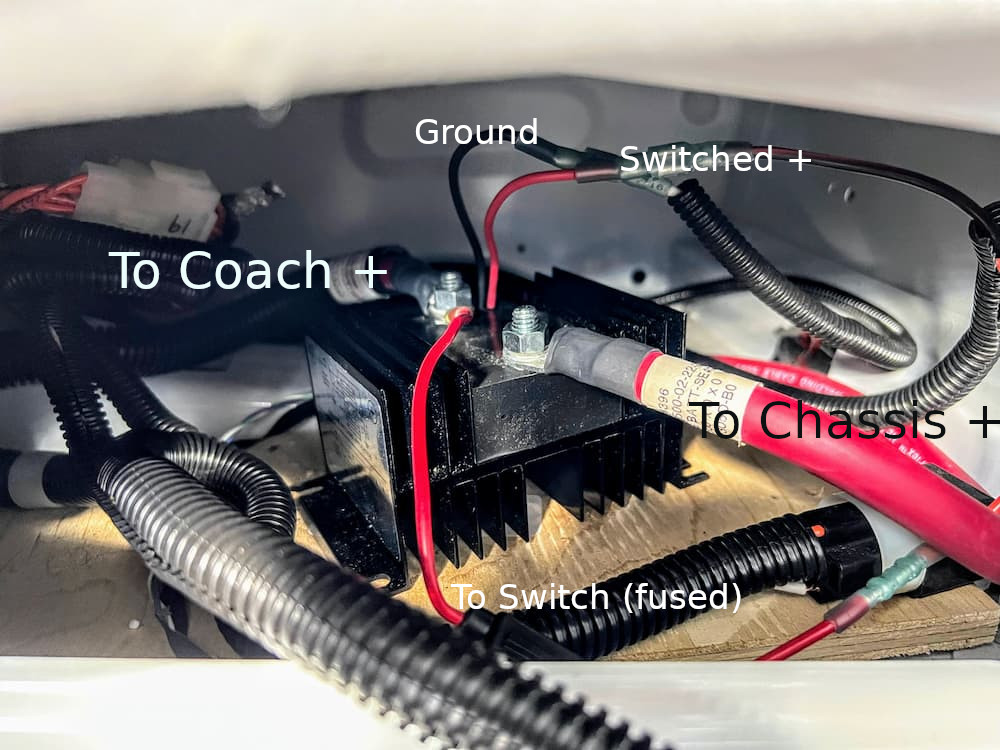
I powered everything up, and it seems to work. The dash switch connects and disconnects the starter battery, preventing the Rego from doing anything when I don’t want it to.
Displayed voltages were correct on both sides.
The relay may be overkill. You could have a manual switch, or no switch at all. Sometimes I like to overdo things.
One slightly odd artifact I have observed – if I pull the ground bolt under the gas pedal – for extended storage unpowered – as expected, the Rego will show zero on the starter battery since its “gone”. No fault codes or lights or anything.
On the other hand, if I switch off the battery master switch – but leave the Mercedes ground bolt connected – the Rego starts a fault beep with its light flashing. Maybe this is a good thing. If I am leaving the RV for a long enough time to turn off the house battery I almost certainly would want to also disconnect the Mercedes battery – so the beeping certainly prevents forgetting that.
As it stands though if for some reason thats what I really wanted I would have to throw the breaker on the chassis side of the Rego in that unlikely event to silence the beep. So not a big deal either way.
Update: Feb 2023
I did start the engine and let it run briefly. Sure enough pumped about 57 amps to the house battery after about 30 seconds so I’d consider this a wrap for now:
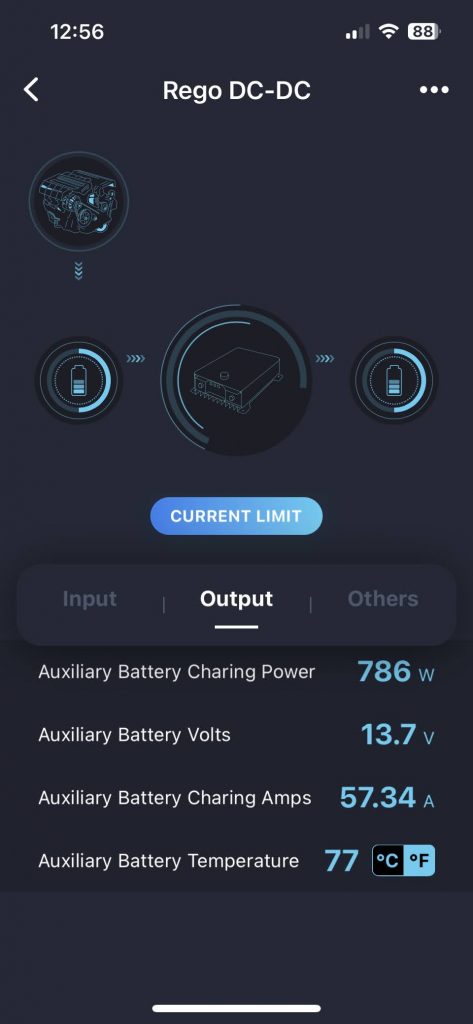
A few days later I drove the RV for about an hour. The Rego started with 60 amps charging but switched after while to 40 amps while doing a “boost” (absorption) charge. It could have stayed longer at 60 but I also had solar streaming close to 30 amps, and I think DC-DC chargers get confused in that situation and see the higher voltage as a sign its time to cut back.
So it seems fine to me! I drove home and plugged in the RV and for the first time in 4 years of ownership I didn’t have to get out a charger for the Mercedes battery. As soon as I plugged in the Rego started reverse charging the starter battery and that floated it all night.
March 2025 Update:
Well it still works and I am mostly satisfied. The Cole Hersee solid state relay sounded like a great idea but didn’t work out. Its super expensive but didn’t seem to work. I think because the input and output were not exactly the same. I removed it as it wasn’t needed anyway, and I ended up later using it on my NovaKool refrigerator install as a low idle current remote on/off switch. Total overkill for that but was just gathering dust anyway.
Some parts are linked below:
Links are Paid



